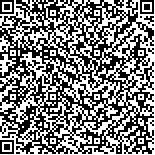徐安乐,荣积峰,黄强民,等.针刺治疗对肌筋膜触发点模型大鼠脊髓背角P物质和突触素表达的影响[J].中华物理医学与康复杂志,2022,44(7):583-588
扫码阅读全文

|
| 针刺治疗对肌筋膜触发点模型大鼠脊髓背角P物质和突触素表达的影响 |
|
| |
| DOI:10.3760/cma.j.issn.0254-1424.2022.07.002 |
| 中文关键词: 肌筋膜触发点 疼痛 针刺 P物质 突触素 大鼠 |
| 英文关键词: Myofascial trigger points Pain Dry needling Substance P Synaptophysin |
| 基金项目:国家自然科学基金面上项目(81470105);上海市卫生健康委员会科研项目(202040023) |
|
| 摘要点击次数: 4088 |
| 全文下载次数: 5393 |
| 中文摘要: |
| 目的 探讨针刺治疗对肌筋膜触发点大鼠模型脊髓背角P物质和突触素表达的影响。 方法 采用随机数字表法将64只健康雄性SD大鼠分为空白对照组(16只)和模型组(48只)。模型组大鼠通过钝性打击+离心跑建立触发点模型,造模成功后再将模型组随机分为模型对照组、按摩治疗组和针刺治疗组。对针刺治疗组进行4周的针刺治疗,按摩治疗组则进行4周的按摩治疗。于治疗前和模型组干预4周后(治疗后)测量4组大鼠的疼痛阈值。第2次(治疗后)疼痛阈值检测完毕后,对4组大鼠进行取材,分别通过免疫印迹法和免疫组化法对大鼠脊髓背角P物质和突触素含量进行测定,并进行统计学分析。 结果 治疗后,模型对照组有14只(93.33%)依然存在触发点,显著高于按摩治疗组治疗后的8只(50.00%),针刺治疗组治疗后的7只(43.75%),差异均有统计学意义(P<0.05)。治疗后,模型对照组、按摩治疗组的疼痛阈值显著低于空白对照组治疗后,差异均有统计学意义(P<0.05),而针刺治疗组治疗后的疼痛阈值与空白对照组治疗后比较,差异则无统计学意义(P>0.05)。治疗后,模型对照组、按摩治疗组和针刺治疗组大鼠的疼痛阈值较组内治疗前均明显改善,差异均有统计学意义(P<0.05);且按摩治疗组和针刺治疗组的疼痛阈值显著高于模型对照组,差异均有统计学意义(P<0.05)。免疫组化结果显示,模型对照组大鼠脊髓背角P物质表达明显高于空白对照组、按摩治疗组和针刺治疗组,差异均有统计学意义(P<0.05)。免疫印迹的结果显示,模型对照组P物质/GAPDH比值明显高于空白对照组、按摩治疗组和针刺治疗组,差异均有统计学意义(P<0.05)。按摩治疗组P物质/GAPDH比值高于空白对照组,差异有统计学意义(P<0.05)。 结论 针刺和按摩治疗均可缓解触发点模型大鼠的疼痛,有效地灭活触发点,并降低脊髓背角P物质的含量。 |
| 英文摘要: |
| Objective To observe any effect of dry needling of myofascial trigger points on substance P and synaptophysin expression in the spinal dorsal horn. Methods Sixty-four Sprague-Dawley rats were randomly divided into a control group (n=16) and a model group (n=48). Myofascial trigger points were induced in the model group by a blunt strike and eccentric running. That group was then randomly divided into a no-treatment group (n=15), a massage group (n=16), and a dry needling group (16 rats). The rats in the two treatment groups received 4 weeks of dry needling or Chinese massage. Pressure pain thresholds were recorded before the experiment and after the 4 weeks. The content of substance P and synaptophysin in the spinal dorsal horn were measured using immunoblotting and immunohistochemistry. Results After the treatment 14 rats (93%) in the model group had trigger points, significantly higher than the 8 rats (50%) in the massage group and the 7 rats (44%) in the dry needling group. After treatment, the average pressure pain thresholds of the no-treatment and massage groups was significantly lower than the control group′s average, while the difference between the dry needling group and the control group was not significant. The average pressure pain threshold had improved significantly in the no-treatment group, the massage group and the dry needling group, and the averages of the massage group and the dry needling group were significantly higher than that of the no-treatment group. The level of substance P was significantly higher in the no-treatment group than in the other three groups and the ratio of substance P to Glyceraldehyde 3-phosphate dehydrogenase (GAPDH)was significantly higher. The substance P:GAPDH ratio of the massage group was significantly higher than that of the control group. Conclusions Dry needling and massage are effective in relieving myofascial pain, at least in rats. Both can reduce the content of substance P in the spinal dorsal horn. |
|
查看全文
查看/发表评论 下载PDF阅读器 |
| 关闭 |
|
|
|